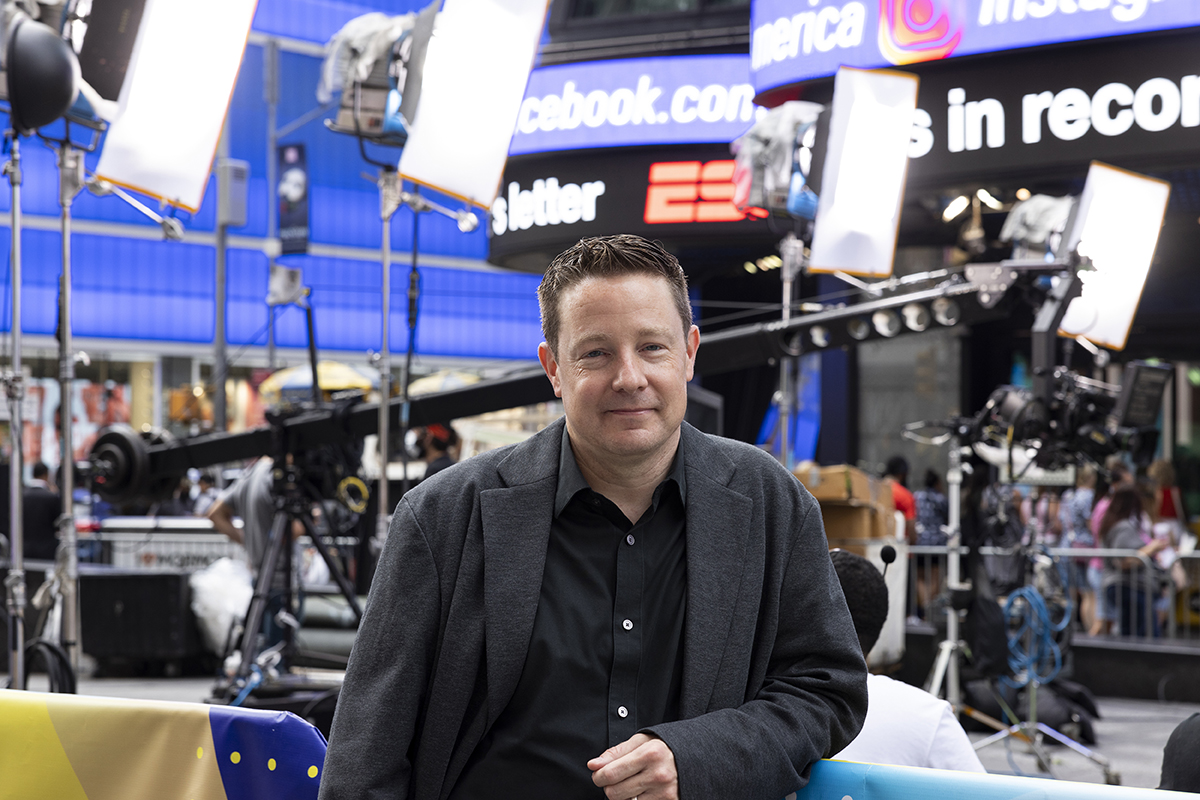Dale Knoth lights notable Broadway and TV productions
1995 graduate's credits include 'Good Morning America'

Dale Knoth ’95 is senior designer at The Lighting Design Group in New York. The company has open and future projects for TV networks including ABC, NBC, CNN and Bloomberg, among others. He has worked with each, while most of his time has been spent on ABC’s Good Morning America.
Question: How did you get into this line of work?
Answer: My interest in lighting design began in high school, when I worked backstage on plays and musicals presented by the drama club. That led to working with some amateur theater groups, but it really wasn’t something I wanted to do for the rest of my life. I was much more interested in history and government, which led to my choice of Binghamton. In fact, I started attending Binghamton between my junior and senior years in high school under a program called Concurrent Admissions, designed for qualified local high school students, allowing them to study on campus as college freshmen (my instructors didn’t know I was in high school at the time). I earned 16 credits before I matriculated in the fall of 1992. When I signed up for classes that fall, an advisor recommended I take one class in something that I was interested in and came naturally, so I chose John Vestal’s Technical Theater 103 class. I loved my history and science classes, but his class got me hooked. I really enjoyed the hands-on craft, the process, collaboration and, most of all, the ephemeral nature of working with light to tell a story. I declared my theatre major in the spring of 1993. I finished in December of 1995 and worked for six months locally at The Cider Mill Playhouse and the Anderson Center for the Performing Arts before moving to attend New York University (NYU) for an MFA in lighting design.
When I finished at NYU, I worked on and off Broadway, in regional theater, on trade shows and industrials, architectural projects (including the Bearcat Den in the Events Center) and even consulted on a nightclub or two. I often worked as an assistant or associate with established designers or design firms, but also led my own projects over the years. In 2007, I started working in television and joined a firm specializing in this area.
Q: What do you enjoy most about your work?
A: I enjoy the challenges involved with producing work in television, the great amount of collaboration it takes to get something on the air and the need for nimble problem-solving. Of course, I still enjoy the ephemeral nature of working with light to tell a story, make the visuals beautiful and make the talent look great.
Q: What show or shows are you most proud of having worked on?
A: For my own design in theater, one of the projects I’m most proud of was Eye Sling Shot Lions, written and performed by Elliott Earls and produced by The Wooster Group. Earls performed music and spoken word in conjunction with a computer program he created that was designed to be non-linear. Neither he nor I knew what was going to happen next as the machine randomly determined the next event in the course of the evening. In effect, the lights were improvised with the performer each time. It was never the same show twice.
Among my many collaborative theater projects, I was an associate on the Broadway revival of Nine in 2003. Everyone from the producers to the stagehands got along and moved as one toward the best telling of the story. It was my first time working in a Broadway theater and I had never worked so hard and felt so proud of being on a team.
More recently, for television, I designed lights for a BBC Radio 1 Live Lounge episode with Taylor Swift in August 2019. This was the day after she won a handful of awards (and also performed at) the MTV Video Music Awards. There were enormous time and space constrictions, not to mention the pressure of making one of the biggest stars in the world look fantastic. Fortunately, both the BBC and Swift’s teams were clear about their desire for a dressed-down, warm and intimate look. It was lit with six robotic lights and a handful of theatrical fixtures in about two hours, which was all the time we had. Everyone on the crew gave their 110% that day and the product was beautiful.
Q: How did Binghamton influence your career journey?
A: I’m grateful for my education at Binghamton. Even though I finished with a degree in theatre, I had much broader educational experiences because I studied history, government and literature. This has made me much more well-rounded and able to take that knowledge and apply it to my own work.
Without the late John Vestal, longtime department chair, I wouldn’t be here now. The current chair, Barbara Wolfe, encouraged me to continue forward. Don Boros and Donald Guido were two of my favorite instructors who informed my attitudes toward the academic and technical aspects of my career.
